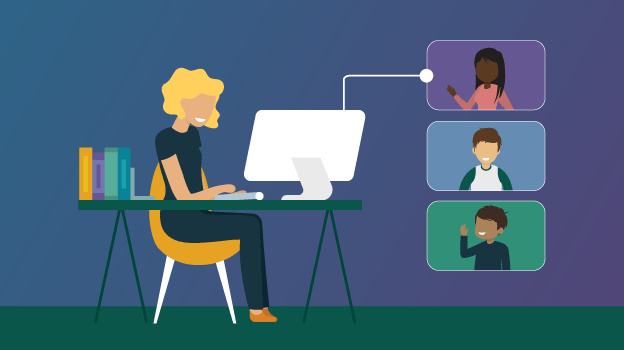
7 Digital portfolio guidelines for outstanding learning performance
Portfolios are excellent assessment tools for implementing a personalized learning approach since students are encouraged to use their talents to create original content. Portfolios help students take ownership of their learning, plan their tasks in advance, practice their skills, and showcase their progress. They can have a lasting impact, since students are actively involved in the process and can transfer skills to different subjects.
We have prepared seven guidelines that show how easy it is to implement digital portfolios in the classroom. Let’s explore them!
-
Choose the right tools
A good digital portfolio tool must allow students to add, edit and delete items with ease. It should also function as a way to showcase your students’ work. For example, the portfolio can be visible under their student profile. Ideally, a portfolio feature should already be part of a tool that teachers and students use every day, such as an LMS.
-
Make room for creativity
The possibilities are endless! Students can experiment with video/audio, essays, photography, live streaming, coding tools, you name it. They will feel that the learning process is more relevant for them, and will be able to communicate their ideas better through interactive portfolios.
-
Organize portfolios
Depending on the purpose of the digital portfolio, students can update their portfolios throughout the semester or throughout the year. They can also have deadlines for uploading items, or submit them at their own pace. A good idea is to create a simple template for them to use at the beginning and stress the importance of record keeping — no file should be lost in the process.
-
Enable student choice
Depending on the goal of the digital portfolio, students should be able to pick which essays, videos, recordings etc. make the final cut. Portfolios make it easier for them to reflect on their own work and evaluate their progress. Increasing awareness about the learning process also leads to increased self-efficacy and confidence in their own abilities later on.
-
Use digital portfolios as assessments
Digital portfolios are an excellent competency-based assessment tool. Each portfolio assignment can be linked to competencies defined by the state or district curriculum. Of course, teachers should keep in mind that they need to design portfolio assessments with learning outcomes in mind, and use tools such as rubrics to better evaluate student performance.
-
Encourage student reflection
Digital portfolios enable metacognition because they offer a chance to plan, monitor and evaluate their own tasks. In this way, they will become more aware about their progress, as well as gain a valuable skill that will be useful later on. It also provides unique insight for teachers, as they will be able to better help students achieve their learning goals.
-
Showcase versus learning portfolio
Putting together a digital portfolio can help students achieve their goals in the long run. They can even use it as part of their application for college, internships, and even jobs. This is an example of a long term purpose or showcase portfolio. A short term purpose, or learning portfolio can be used as an assessment method that has a shorter lifespan, of let’s say, one semester.
Visit our Blog for insightful posts on edtech for K-12 and Higher Ed.







